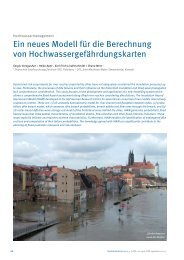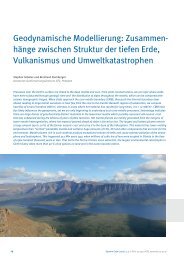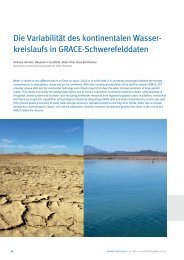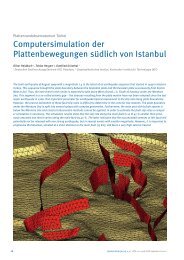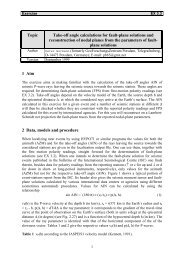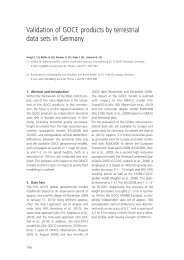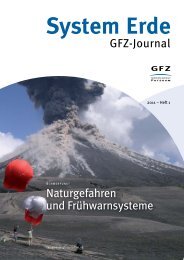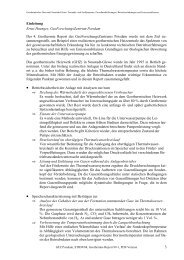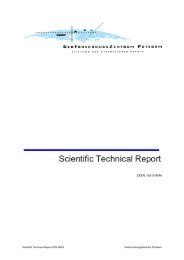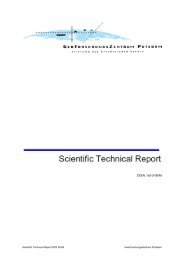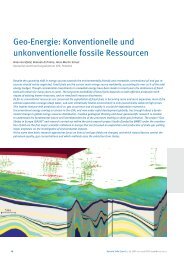2 Seismic Wave Propagation and Earth models
2 Seismic Wave Propagation and Earth models
2 Seismic Wave Propagation and Earth models
You also want an ePaper? Increase the reach of your titles
YUMPU automatically turns print PDFs into web optimized ePapers that Google loves.
2. <strong>Seismic</strong> <strong>Wave</strong> <strong>Propagation</strong> <strong>and</strong> <strong>Earth</strong> <strong>models</strong><br />
Fig. 2.13 Particle motion for the fundamental Rayleigh mode in a uniform half-space. Shown<br />
is one horizontal wavelength. At the surface the vertical motion is about 1.5 times larger than<br />
the horizontal motion. Note the change from retrograde to prograde sense of elliptical particle<br />
motion at a depth larger about Λ/5. The wave propagates from left to right. The dots show the<br />
position of the same particle at a fixed distance with time increasing from the right to the left<br />
(modified from Shearer, Introduction into Seismology, 1999; with permission from<br />
Cambridge University Press).<br />
Fig. 2.14 3-component broadb<strong>and</strong> records (top traces) <strong>and</strong> related plots of particle motion in<br />
the horizontal (N-E) plane <strong>and</strong> two vertical planes (Z-N <strong>and</strong> Z-E, respectively) of the surfacewave<br />
group of the same event as in Fig. 2.6 (D = 112 km; backazimuth BAZ = 273°).<br />
Fig. 2.14 above shows, for the event in Fig. 2.6, the 3-component broadb<strong>and</strong> record of the<br />
Rayleigh-wave group <strong>and</strong> the related particle motion trajectories in three perpendicular<br />
planes. There exists indeed a strikingly clear retrograde elliptical motion in the vertical-east<br />
16



